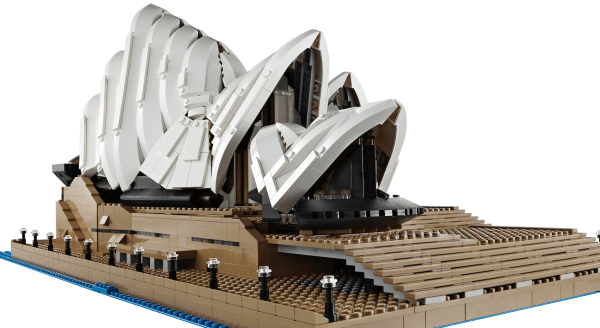Imagine walking into the Lego store with me.
Imagine walls of Legos. Tons of them everywhere, for as far as you can see.
Now imagine the salesperson walking up to us and starting to take us around every single section of the store. Every time they get to a new section they start pitching us on the products in that area. When they don't see us jump at them, off they take us to another part of the store.
They're dedicated to selling us every. single. thing.
Would you buy? Doubtful. Me? Not likely.
We'd just agree to come back later when they weren't working.
Because no one likes an obnoxious salesperson.
Yet, when we work on the copy of our product website, we do the same thing – don't we?
Right away we start pitching all the nifty features. One of the issues I had with the product I wrote about yesterday is that it had way too many features – making it bloatware.
Worse, if we sell multiple products, we're trying to sell everyone every single item. No one needs that.
People show up to solve a problem, not to buy a product.
Selling Features
If you're like me, if you love building products, let's agree that we get fascinated with cool features. They're mini puzzles that we attack because they're fun. Because they're hard and challenging. And because we're wired for puzzles.
But here's the thing. In the whole history of all product development, there's not a single study that proves a high correlation between fancy features that took complicated efforts to build and higher revenues.
In fact, the studies suggest something different. The simpler the solution, the easier it is to adopt and to envision using – which drives sales.
Selling features is easy – because you've already invested so much that you know everything there is to know about that feature. So writing that copy is easy.
But it doesn't translate.
I love Legos. I don't know how they're built. I don't know what kind of polymer is involved. I don't know the heat at which my pieces will melt (though now that I write it, I think that's a worthwhile experiment when the kids go to bed).
I don't know, and I don't need to know, how the feature was built or how it got here.
I buy Legos for completely different reasons.
I make decisions because of me, not you
Maybe you've heard me use this illustration already. But it is so important that I often say it over and over again.
Imagine walking into a shoe store to buy a pair of shoes. There are three pairs – a really cheap pair, a ridiculously expensive pair, and the middle of the road pair. The cheap one isn't built well, and the high end one boasts of materials that will help it outlast nuclear winter, but all three look similar.
When I make the choice (the middle one), I do so because of what it says about me. Because what I think of myself, more than the product.
I don't make the decision based on features. I base my decision on how I see myself – I'm not super cheap and won't buy the crappy pair. I'm not willing to waste money, so I won't buy the high end pair. So I pick the “intelligent” choice.
It's how I see myself that helps me make the choice. Not any of the features someone spent time trying to advertise.
Sell Destinations, not Features
When I work with companies to help them sell better, I explain that story about shoes. And right away they often respond with, “Yeah, we know, sell benefits, not features.”
That's good. It's close. But it's not far enough.
See, in my example above, I was not buying benefits either. I was buying the end result of my choices.
In effect, I was buying the image of myself based on how I thought of myself.
I know, it's crazy to think about it that way, but let's look at a different example.
I started doing research today about vacations in 2015. My big 2014 ones are all booked. No issues there.
But I started looking at yacht vacations. Yes, I like to vacation. But notice how they're selling me.
They don't pitch me on boat size. They don't tell me about the speed it can go. No feature talk for them.
They don't pitch me on benefits either. They're not talking about how a good vacation will give me the recharge I need to work harder. Nope.
Instead, they take me somewhere. They show me a destination. And they (quietly) ask, “Is this destination right for you?”
This works even for inexpensive products
I know. You think, sure, it's easy to talk destination when it's a yacht and a vacation. But let's go back to that Lego store I was in just the other day.
I didn't get a rude salesman. Instead I got a great gal who approached and asked me whether I would be working on this next project alone or with my family. She asked about their ages.
And then she talked about some of their larger projects that would be fun for the whole family.
Yes, she sold me the Australian Opera House. But she really sold me on a destination I could see: my whole family working together at our dining table.
And as she did it, it never felt like she was selling. Because she was tapping into a destination I already wanted to visit.
So sell more by selling less.
Don't sell features. Don't sell benefits. Sell destination.

